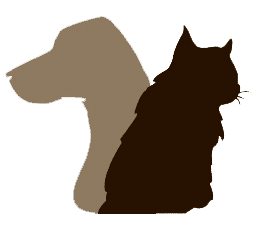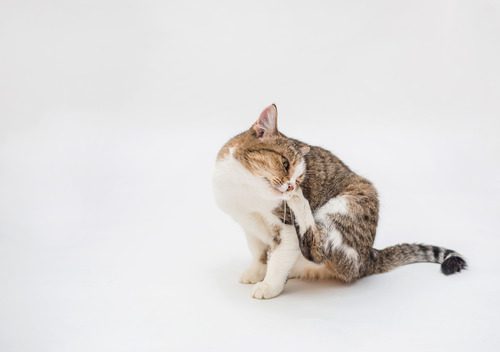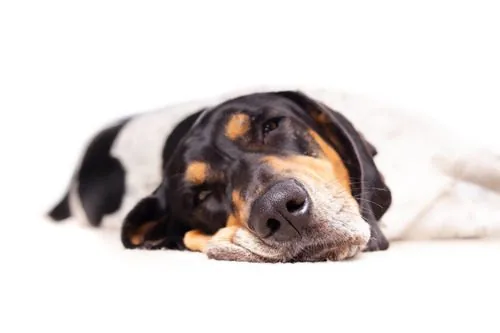What Do Dogs Dream About?
Have you ever watched your dog sleeping—legs twitching, nose wriggling, tail flicking—and wondered what’s going on in that busy little brain? Those soft barks or sudden jerks might look like random movements, but science suggests there’s more to it than meets the eye. Dogs, much like people, experience stages of sleep that include vivid dreams. But what do dogs dream about, really? That question has fascinated scientists, pet owners, and veterinarians alike.
At Mendocino Animal Hospital, we love helping pet parents better understand their dogs’ behavior. Sleep behavior offers a unique window into your dog’s mind. Whether your dog snoozes peacefully or acts out imaginary adventures in their sleep, learning about dog dreams can deepen your bond and help you become more in tune with their needs. Let’s explore what’s really going on when your dog dreams.

Dogs Experience REM Sleep Like Humans
If you’ve ever asked yourself “What do dogs dream about?” the answer begins with understanding how dogs sleep. Dogs cycle through multiple stages of sleep, just like humans. These include slow-wave sleep (SWS), where the body begins to relax, and rapid eye movement (REM) sleep, the stage most closely linked to dreaming. During REM sleep, your dog’s brain activity increases dramatically. You might notice twitching, vocalizing, or rapid breathing during this time. These physical signs indicate their brain is actively processing information—likely through dreams.
How Often Do Dogs Dream?
Interestingly, smaller breeds tend to dream more frequently than larger breeds, although the dreams may be shorter in duration. Puppies also dream more often than adult dogs. Because puppies are constantly learning and absorbing new experiences, their brains likely need more dream time to process all that new information. Whether your dog is young or old, it’s likely that dreaming plays an important role in how they mentally catalog their daily adventures.
What Do Dogs Dream About?
This question sparks curiosity in just about every dog owner. While dogs can’t tell us directly, researchers have studied brain patterns in sleeping animals to get as close to an answer as possible.
Processing the Day’s Events
Scientists at MIT conducted studies on rats that demonstrated brain activity during sleep mimicked activity from earlier in the day. When rats ran through a maze, the neurons firing in their brains followed a specific pattern. During REM sleep, those same patterns repeated—suggesting the rats were dreaming about the maze. Since dogs have even more complex brains than rats, researchers believe dogs also replay their waking experiences while dreaming. So, what do dogs dream about? Most likely, the same things they experience while awake. This could include playing fetch, interacting with their humans, exploring the backyard, or visiting their favorite park.
Familiar Faces and Places
Dogs have strong emotional bonds with the people and animals in their lives. It’s reasonable to think they dream about their family members—both human and canine. That excited tail wag or sleep-time bark may be a sign your dog is dreaming of a joyful reunion or an exciting game.
Practicing Learned Behaviors
Some researchers believe dogs use dreams to mentally rehearse skills. If you’re training your dog or introducing new commands, they may practice these tasks while asleep. Dreaming can help reinforce memory, which explains why dogs often make progress in training after a good nap.
Can Dogs Have Nightmares?
As charming as it is to imagine your dog dreaming of belly rubs and treats, not every dream is pleasant. Just like humans, dogs can experience nightmares. If your dog appears distressed while sleeping—whining, growling, or flinching—they may be having a bad dream. While it’s tempting to wake them, it’s usually best to let the episode pass. Waking a dog during REM sleep can startle them, possibly causing confusion or fear.
Signs of a Nightmare
While there’s no way to confirm the content of a dog’s dream, signs that they may be having a nightmare include:
- Whimpering or whining
- Growling or barking
- Rapid movement or twitching
- Sudden waking with signs of anxiety or confusion
Dogs who have experienced trauma or have a history of fear-based behavior may have more frequent or intense nightmares. If your dog regularly shows signs of sleep distress, it may be worth discussing with your veterinarian.
Why Dreams Matter for Your Dog’s Wellbeing
Understanding what dogs dream about gives us more than just cute conversation material—it also sheds light on their emotional and cognitive health. Dogs use sleep to process memories, manage stress, and reinforce learning. Just like in humans, quality sleep helps dogs stay mentally sharp and emotionally balanced. Dreaming appears to be part of the brain’s natural housekeeping process, sorting through events and emotions.
Creating a Safe Sleep Environment
If your dog is going to dream peacefully, they need a restful place to do it. Consider the following:
- Provide a quiet, comfortable space away from noise or foot traffic
- Use a soft bed that supports their joints, especially for older dogs
- Keep the sleep area at a comfortable temperature
- Establish a regular bedtime routine
These steps support uninterrupted sleep, giving your dog the best opportunity to rest, dream, and recharge.
Puppies, Seniors, and Dream Patterns
The age of your dog can influence how they dream. Young puppies spend more time in REM sleep than adult dogs, which explains all those little twitches and squeaks during nap time. Their brains are rapidly developing, and dreams help them make sense of the new world around them. Senior dogs, on the other hand, may experience changes in their sleep cycles. They might sleep more during the day or have shorter REM periods at night. While dreaming may still occur, the patterns can shift. If you notice significant changes in your dog’s sleep behavior, bring it up during your next vet visit.
Why the Question “What Do Dogs Dream About” Continues to Fascinate
There’s something universally heartwarming about watching a dog sleep and wondering what’s going on in that busy mind. The question “What do dogs dream about?” connects science, behavior, and the human-animal bond in a unique way. From chasing tennis balls to replaying moments with their favorite person, dreams offer a glimpse into your dog’s emotional life. Dogs might not be able to describe their dreams, but the signs are all there. The next time your pup’s paws twitch during a nap, smile—you might be witnessing a dream in motion.
If you have questions about your dog’s behavior during sleep or want to learn more about how sleep affects overall wellness, Mendocino Animal Hospital is happy to help. Please call (707) 462-8833 or book an appointment online today. We’re happy to support you and your dog with care that’s grounded in trust, expertise, and compassion.
Recent Posts
Dog UTI Symptoms
Urinary tract infections (UTIs) can affect dogs of any age, breed, or size—and when they do, it…
Ear Mites in Cats
If your cat has been shaking their head, scratching around their ears, or showing signs of discomfort,…
Can Dogs Have Cheese?
Many pet owners enjoy sharing small bites of their favorite snacks with their dogs—especially something as tempting…
Is it Normal That My Dog is Snoring?
Dogs snoring can be adorable, but it can also raise concerns for pet owners. If you’re wondering,…
8 Tips for Cat Proofing Your Christmas Tree
As the holiday season approaches, many pet owners look forward to decorating their homes with festive cheer….
About Mendocino Animal Hospital
At Mendocino Animal Hospital, we believe in fostering the human-animal bond with excellent veterinary medicine. Our full-service veterinary practice operates in Ukiah, CA with a team of skilled veterinarians and a passionate, talented support staff who make you feel like a part of the family.
As an AAHA-accredited animal hospital, every service and aspect of our practice meets AAHA’s Standards of Excellence. No matter what your pet comes in for, they’ll receive only the best in care, compassion, and service.





